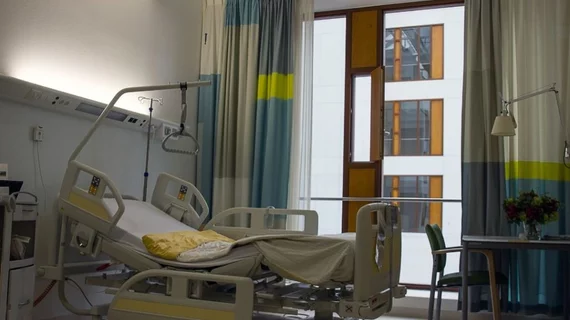Patients staying in semi-private hospital rooms have a greater chance of contracting a central line-associated bloodstream infections (CLABSIs) when compared to those in private rooms, according to a study published in PLOS One.
In the study, researchers looked at the potential for private rooms at hospitals to lower the risk of CLABSIs. According to the study, more than 41,000 people are affected annually by CLABSIs, one of the costliest, most dangerous types of hospital-acquired infections (HAI).
The mortality rate for CLABSIs is estimated at 12 to 25 percent, and they are estimated to cost about $2 billion annually.
The study looked at the discharge records of more than one million patients from 335 Texas hospitals in 2013. Out of those patients, researchers identified 1,357 CLABSI cases. Private-room hospitals had 33 percent fewer cases of CLABSI than bay-room (semi-private) hospitals.
“Patients who stayed in bay rooms had 64 percent more central line infections than patients who stayed in private rooms,” the study said. “Even after adjusting for relevant covariates, patients assigned to bay rooms had a 21 percent greater relative risk of a central line infection, compared with patients assigned to private rooms.”
The study also said that 15 percent of private-room hospitals reported having zero CLABSIs, while just 2 percent of bay-room hospitals reporting having no cases. The risk of mortality due to CLABSIs was also twice as high in bay-room hospitals.
“We found a positive association between the percentage of bay rooms in a given hospital and CLABSI rates, even after adjusting for patient risk factors and other variables. Among patients who stayed in (bay-room) hospitals, those who were assigned to private rooms had a 24 percent relative risk reduction for CLABSI compared to those who stayed in bay rooms,” the study said.
“This study also found that hospitals with mostly private rooms, that is, (private-room) hospitals, also had a shorter length of stay, fewer intra-hospital transfers, and higher nurse staffing levels than (bay-room) hospitals. Each of these has also been associated with fewer HAIs and lower CLABSI rates.”
The authors encouraged research into other potential benefits of private rooms.
“Yet there are numerous other potential benefits of private rooms that warrant further study. These include: improved patient privacy, reduced medical errors, improved nurse satisfaction, reduced noise, improved sleep, and reduced length of stay,” the study said. “Future research should extend this analysis to include a broader scope of process and outcome measures, such as measures of patient and employee satisfaction.”

